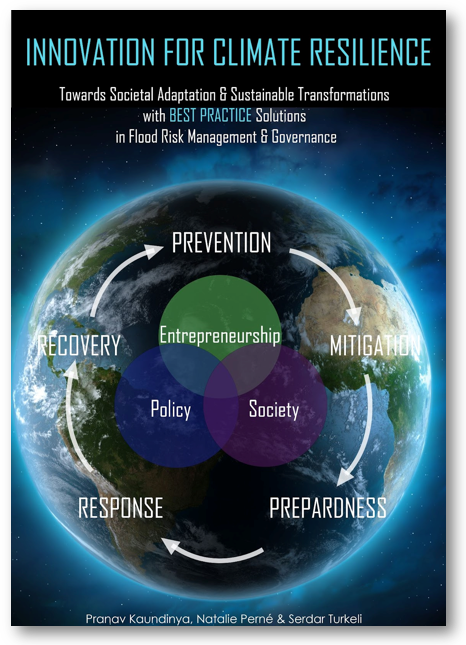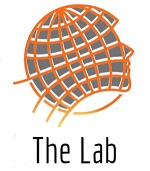 Innovation for Climate Resilience: Towards Societal Adaptation and Sustainable Transformations with Best Practice Solutions in Flood Risk Management and Governance
Innovation for Climate Resilience: Towards Societal Adaptation and Sustainable Transformations with Best Practice Solutions in Flood Risk Management and Governance
Authors: Pranav Shankar Kaundinya, Natalie Perné, Serdar Türkeli
Technological change and innovation are increasingly seen as being able to provide solutions to addressing flood risks and fatalities caused by accelerating climate change. Yet, associated stakeholders face divergent challenges: 1) Stakeholders tend to act in isolation creating silos in flood risk management and governance; 2) Public sector is challenged in moving forward with flood prevention and single-purpose solutions; 3) Citizens are still waiting to be connected to the flood risk management domain and facilitated to contribute; and 4) Entrepreneurs with potentially useful ideas need experimenting with the possibility of multiple value creation that stems from multi-stakeholder collaborations.
To update stakeholders on new technologies which could alleviate the aforementioned challenges and transcend stakeholders’ limitations, this research brings forward multiple best practices of technological developments or innovations introduced by public, private and social sector across five stages of disaster risk management of the Sendai Framework: Prevention, Mitigation, Preparedness, Response and Recovery.
Case studies for the social and public sector were identified through a systematic literature review. Surveys with each set of key stakeholders were conducted to better inform the literature review and help select appropriate practices for each stakeholder-stage combination. Foundation for the case studies on the private sector stakeholder group is laid by a systematic search of relevant keywords in news media and grey literature. With three-dimensional selection criteria for each stakeholder, the socio-technological solutions were selected. For the private sector: the most innovative, impactful and profitable technologies (developed or employed). For the public sector: the most cost-effective, feasible and equitable solutions were chosen. And finally, for the social sector the criteria a proven model with the following criteria was employed for selection: Communication, Coordination and Cooperation.
Interviewed stakeholders involved in the public, social and private sector uncovered the following: even though these cases are best practices with respect to the 3-dimensional criteria, there are still multiple barriers in place for their effective and efficient implementation. An overly differentiated and siloed modus operandi towards flood risk management and governance challenges experimenting with developing mutual trust and understanding of each stakeholders’ priorities and abilities. Although the public sector increasingly prioritises technology that can bridge the communication gaps between citizens and technical expertise, many start-ups struggle to access sufficient funding to fully pilot test emerging or scale-up proven technologies. Managing stakeholders’ expectations of each other and using dialogue platforms to surpass current barriers is deemed as paramount in ensuring effective and efficient use of combined capacities and capabilities. Stakeholder inclusivity and accelerated collaboration through data, digitalization and transparency allow all relevant stakeholders to utilise technological change and innovation as a leverage to achieve positive returns on flood risk management and governance to enhance potential outcomes for all.
Keywords: Technology, Best-practice, Flood-risk Management, Multi-stakeholder Collaboration, Multiple Value Creation, Challenges and Opportunities, Climate Adaption, Sustainable Technology Solutions
This project is funded by MaRBLe UGR 3001 in 2021/2022



